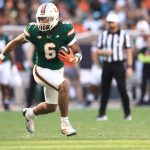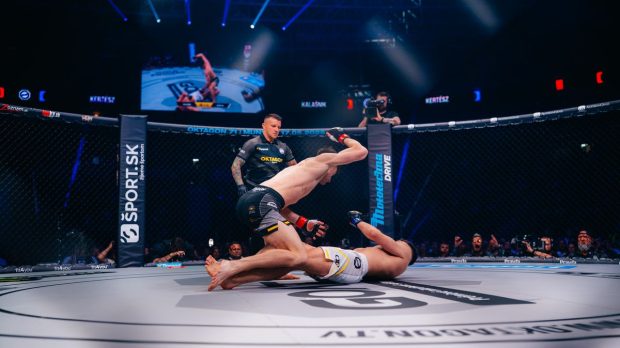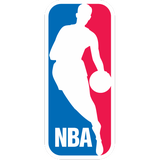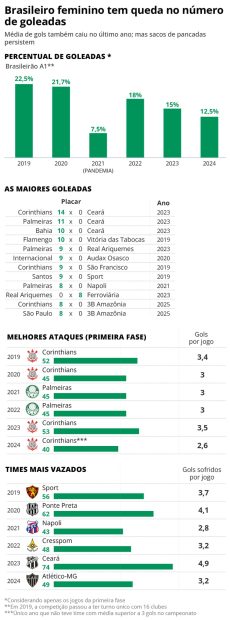

In the first three rounds of the 2025 NFL Draft, the Los Angeles Chargers have filled holes at running back, wide receiver and defensive tackle. However, there is more work to be done.
General manager Joe Hortiz will have seven selections over the final four rounds as he looks to add competition and depth at several positions, including tight end, interior offensive line, edge rusher and cornerback
Here are the top players remaining on my Chargers-specific big board.
Day 3
Jack Sawyer, Edge, Ohio State
The Chargers still have an open spot on their depth chart at edge rusher. They re-signed Khalil Mack and cut Joey Bosa. They have an up-and-coming talent in Tuli Tuipulotu. Bud Dupree, who turned 32 in February, is a fine rotational piece. They need to get younger at the position and prepare for the future. Mack is on a one-year deal. Dupree is in the last year of his contract.
Advertisement
Sawyer “lacks ideal suddenness or length for an edge player,” according to our draft expert Dane Brugler, “but his activity level and the strength in his hands make him an every-down factor.” The Chargers could perhaps look for more speed and bench to fill out their room. But Sawyer had a second-round grade from Brugler and would fit the Harbaugh culture (even though he is a Buckeye).
Miles Frazier, G, LSU
Frazier is a Day 3 option who could compete immediately for the Chargers’ starting left guard spot. He was primarily a right guard over his final two years at LSU, but he started nine games at left guard in 2022. Though Frazier is not an elite athlete, he has the IQ and experience to be a capable pass protector. And he has the potential to be a weapon as a run blocker, especially when climbing to the second level to seal off linebackers and clear rushing lanes. “Frazier has an NFL body with mauling play strength and competitive toughness, which gives him starting potential,” according to Brugler.
Marcus Mbow, G, Missouri
Quincy Riley, CB, Louisville
Riley is undersized, but the ball production is hard to ignore on Day 3. Over five seasons between Middle Tennessee and Louisville, Riley had 54 passes defended, including 15 interceptions. “Riley will need to prove that he won’t be a liability against NFL size and strength, but he has the requisite speed and nose for the football to carry vertical routes and challenge catch points,” according to Brugler, who had Riley as a top 100 player with a third-round grade.
Gunnar Helm, TE, Texas
Helm, who ran a 4.84 40-yard dash, lacks the desired speed for the position. But he was highly productive in his final college season with 60 catches in 16 games. Helm is “a natural catcher of the football and very confident at the catch point,” according to Brugler. He had a 2.5 percent career drop rate.
Advertisement
The Chargers did not come away from the first two days of the draft with a tight end. Tyler Warren and Colston Loveland went off the board in Round 1 before the Chargers were up at 22. Mason Taylor, Elijah Arroyo and Terrance Ferguson came off the board before the Chargers were up at 55. Harold Fannin came off the board before the Chargers were up at 86. They need a third piece in this room behind veterans Will Dissly and Tyler Conklin.
Seth McLaughlin, C, Ohio State
McLaughlin won the Remington Trophy as the nation’s top center despite suffering a ruptured Achilles in November. He turns 24 in August, and he might not have any impact as a rookie because of the injury recovery. But if the Johnson experiment does not work out, the Chargers could be looking for a long-term solution at center. McLaughlin “checks a lot of boxes of a starting NFL center with his body quickness, technical approach and intangibles.” And on Day 3, making a pick with 2026 in mind is perfectly palatable.
Mitchell Evans, TE, Notre Dame
Evans lacks a “special” trait, as Brugler put it. But he is solid in all phases as a pass catcher and blocker. In particular, Evans has the speed and movement skills to stretch defenses vertically, a trait the Chargers should be looking for at tight end. “He has a well-rounded game with the tools to be a solid secondary option in an NFL passing offense,” according to Brugler.
Dorian Strong, CB, Virginia Tech
Oronde Gadsden II, TE, Syracuse
Kyle Kennard, Edge, South Carolina
Kennard is long. He has a violent get-off at the snap, and he has the ability to win with bend around the edge. Kennard had 11 1/2 sacks last season after transferring from Georgia Tech. “Kennard has work to do developing his counters and becoming more consistent on run downs to reach his NFL potential, but he brings energetic speed off the edge when he can pin his ears back,” according to Brugler.
David Walker, Edge, Central Arkansas
Jalen Rivers, G, Miami
Rivers has a massive frame at over 6-foot-6 and 319 pounds with over 35-inch arms. He started double-digit games at left guard in college before transitioning to left tackle for his final two seasons. “Rivers is a large-bodied athlete with the long arms, play strength and functional movements to execute his blocking assignment,” according to Brugler. “His overaggressive tendencies lead to balance issues, however, which must be addressed by pro coaching. He has NFL starting potential and fits best at guard.”
Bilhal Kone, CB, Western Michigan
The Chargers drafted cornerback Cam Hart in the fifth round last year. Hart had elite traits — size and speed — but lacked some consistency in coverage in college. Hart had a stellar rookie season in coordinator Jesse Minter’s defense. Can the Chargers create a similar path for Kone? Minter, like most DCs, likes bigger corners who can run. Kone is over 6-foot-1 and posted a 4.43 40-yard dash. “Kone isn’t a polished player just yet,” according to Brugler, “but his collection of athletic traits and overall toughness are worth the mid-round investment.
Advertisement
Maxen Hook, S, Toledo
The Chargers are bringing back Derwin James Jr., Elijah Molden, Alohi Gilman and Tony Jefferson. But adding a young safety to challenge Jefferson for the fourth spot on the 53-man roster makes sense. Ideally, that young safety could make an immediate impact on special teams. Hook is an instinctive defender who played 681 special teams coverage snaps in his college career.
Jack Kiser, LB, Notre Dame
Jared Ivey, Edge, Ole Miss
Craig Woodson, S, Cal
Robert Longerbeam, CB, Rutgers
Those who have been reading me over the past two months know this already: Longerbeam is one of my favorite Day 3 prospects. His size might impact his ability to get on the field early in his career. He will have a tough time in run support on the perimeter. But his coverage instincts are outstanding, particularly in zone coverage. He got the football in his college career, finishing with five interceptions and five forced fumbles.
Bryce Cabeldue, G, Kansas
Cabeldue was exclusively a tackle in college, but Brugler is projecting a move to guard because of a lack of length. Cabeldue worked at guard at the East-West Shrine Bowl. “His competitive edge, foot quickness and hand strength should translate well,” Brugler writes.
Teddye Buchanan, LB, Cal
Jake Briningstool, TE, Clemson
Jah Joyner, Edge, Minnesota
Que Robinson, Edge, Alabama
Robinson never carved out a starting role in college, but he has a projectable, measurable profile at over 6-4, 243 pounds and 33 1/2-inch arms. He had 15 career special teams tackles at Alabama. “His lack of development is going to stick out like a sore thumb next to NFL players in training camp,” Brugler writes. “His saving grace is his coverage talent on special teams, which might keep him on a roster as he grows as a defender.”
Moliki Matavao, TE, UCLA
Zy Alexander, CB, LSU
Hunter Wohler, S, Wisconsin
Antwaun Powell-Ryland, Edge, Virginia Tech
Some players just have a knack for getting to the quarterback. That is the best way to describe Powell-Ryland as a prospect. He is undersized at 6-2 with 31 1/4-inch arms. That frame will be a non-starter for some teams, and Powell-Ryland might struggle with setting the edge in the run game at the next level. But he has a wide array of pass rushing moves, from speed to power to an inside spin. And he led FBS with 25 1/2 sacks over the past two seasons. “Despite below-average length and get-off burst, Powell-Ryland was a difficult player to block on tape, because of his ability to mix up his rush attack and detach from blockers,” according to Brugler.
Zah Frazier, CB, UTSA
Sebastian Castro, S, Iowa
Castro checks multiple boxes as a Day 3 safety option for the Chargers. He has some Gilman in his game: undersized but makes up for it with a physical play style and instincts in coverage.
Joshua Simon, TE, South Carolina
Simon “can be overmatched by size at the point of attack” as blocker, according to Brugler. But he was a productive receiver in college, including 40 catches for 509 yards and seven touchdowns in 2024. He is over 6-foot-4. He has length. He has speed. Brugler notes that Simon was used primarily in the short area of the field at South Carolina. He certainly has some pass-catching traits worth betting on in the late stages of the draft. He would provide a different flavor than Dissly and Conklin.
Advertisement
Carson Bruener, LB, Washington
The Chargers might already have a finished inside linebacker room between Daiyan Henley, Junior Colson, Troy Dye, Denzel Perryman and Del’Shawn Phillips. But I could see them taking a stab at a depth piece late on Day 3 — particularly one who could impact coordinator Ryan Ficken’s special teams units. Bruener had 23 career special teams tackles over four seasons at Washington.
(Photo of Sawyer: Michael Reaves / Getty Images)
This news was originally published on this post .











Be the first to leave a comment